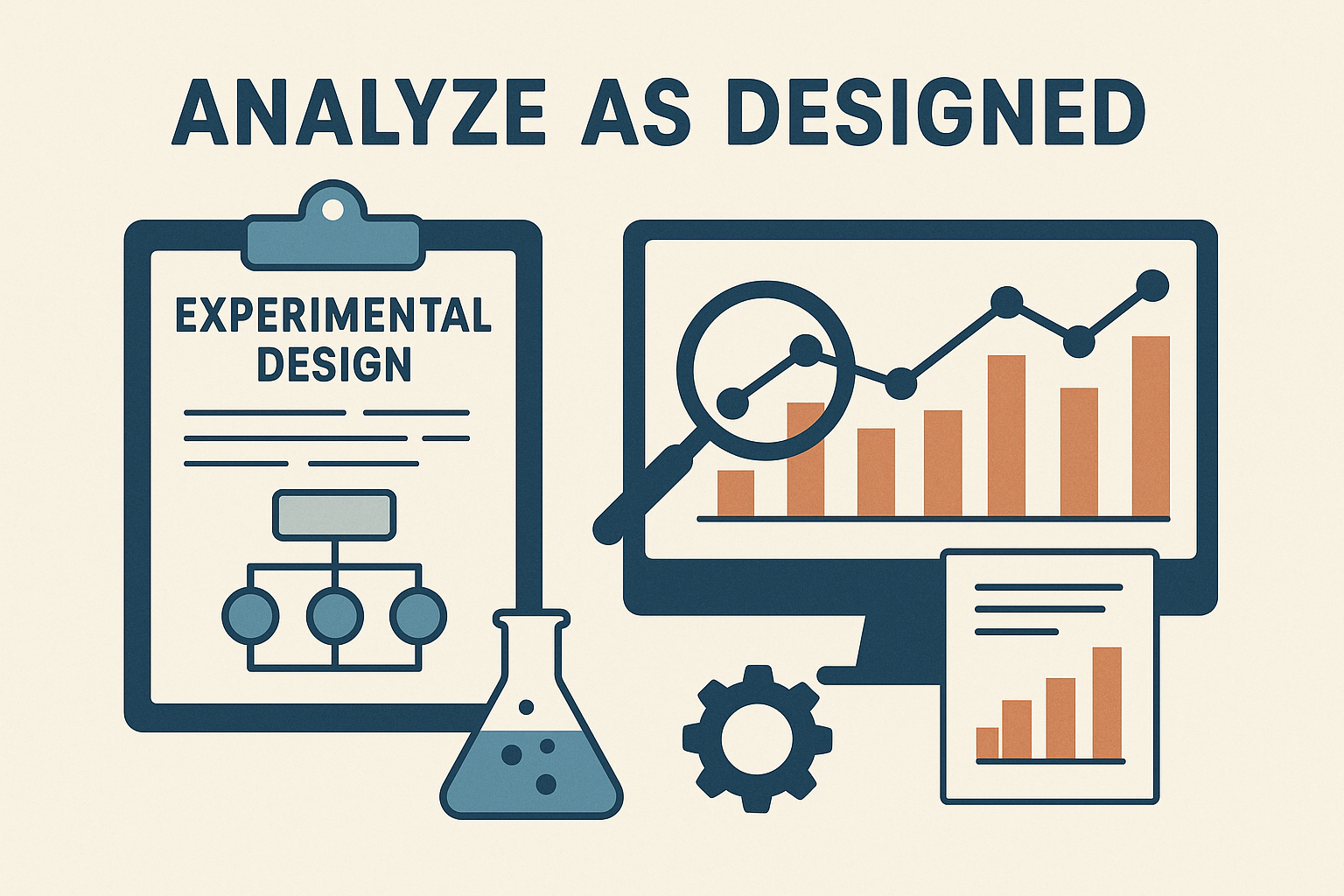Introduction
Last updated on 2025-11-11 | Edit this page
Overview
Questions
- What is gained from good experimental design?
Objectives
- Connect experimental design with data quality and meaningful findings.
Good experimental design generates information-rich data with a clear message. In both scientific research and industry, experimental design plays a critical role in obtaining reliable and meaningful results. Reliable, trustworthy science is not the result of fancy analyses or algorithms. In fact, analysis and design are intrinsically linked and dependent on one another. What you want to find out in your analysis dictates how to design the study, and that design in turn limits the kinds of analysis that you can realistically do. In other words, you would analyze as designed.

No analysis, no matter how elegant or complex, will be reliable or meaningful if based on a flawed design. Sir Ronald A. Fisher famously said:
“To consult the statistician after an experiment is finished is often merely to ask him to conduct a post mortem examination. He can perhaps say what the experiment died of.” Presidential Address to the First Indian Statistical Congress, 1938.
Experimental design aims to describe and explain variation in natural
systems by intervening to affect that variation directly. In an
experiment, the experimenter actively controls the conditions. For
example, the Salk polio vaccine trials collected data about variation in
polio incidence after injecting more than 600,000 schoolchildren with
either vaccine or placebo. In addition, more than a million additional
children were vaccinated and served as observed controls. This study
hypothesized that the vaccine would reduce the incidence of polio in
schoolchildren and the placebo-controlled trials were necessary to
demonstrate the effectiveness of the Salk vaccine. The results showed
that the vaccine was 80-90% effective in reducing polio incidence. The
intervention successfully affected variation in polio incidence
directly.
“A
calculated risk”: the Salk polio vaccine field trials of 1954 by Marcia
Meldrum
- Good experimental design generates information-rich data with a clear message.
